Introduction
In today’s digital era, optimizing marketing automation workflows is crucial for businesses aiming to improve their conversions and maintain a competitive edge. Marketing automation workflows, sequences of automated actions that enhance marketing efficiency, are designed to streamline routine tasks, thus allowing marketers to focus more on strategic efforts. However, workflow inefficiencies often pose a significant challenge, leading to low email engagement rates and difficulties in aligning automation with sales efforts. Such issues can result in wasted leads and a reduced return on investment (ROI).
Heavily optimized workflows provide businesses the opportunity to elevate their lead nurturing workflows, and improve personalization in marketing automation, resulting in higher ROI. According to research, companies that effectively utilize marketing automation workflows can experience a 451% increase in qualified leads. By integrating proven strategies, marketers can significantly enhance their marketing automation workflows, leading to improved conversions, ROI, and overall marketing effectiveness.
For effective optimization, defining marketing automation workflows is essential. This involves sequences of automated marketing actions designed to boost efficiency and efficacy. Here, we explore five proven ways to optimize these workflows for better conversions.
The Importance of Optimizing Marketing Automation Workflows

Creating effective marketing automation workflows fundamentally enhances the customer journey and improves overall marketing efforts. Optimized workflows contribute to a superior customer experience and higher engagement rates. Conversely, broken automation workflows can adversely impact lead generation and conversion rates, often leading to lost leads and decreased conversions. For instance, inefficiencies such as outdated content or delayed responses may cause prospects to disengage.
To remain competitive, continuous improvement and the implementation of best practices for marketing automation workflow optimization are necessary. As an example, a company experiencing declining conversions due to outdated workflows can benefit from optimization strategies to rejuvenate its marketing efforts.
Example: Declining Conversions Due to Outdated Workflows
Consider a company that, due to outdated workflows, observed a marked decrease in sales conversions. By mapping out a marketing automation funnel, covering stages like awareness, consideration, and decision, the company realized how optimization impacts each stage greatly.
Statistics show that businesses nurturing leads through automated workflows generate 50% more sales-ready leads at a 33% lower cost.
1. Streamline Lead Nurturing Workflows
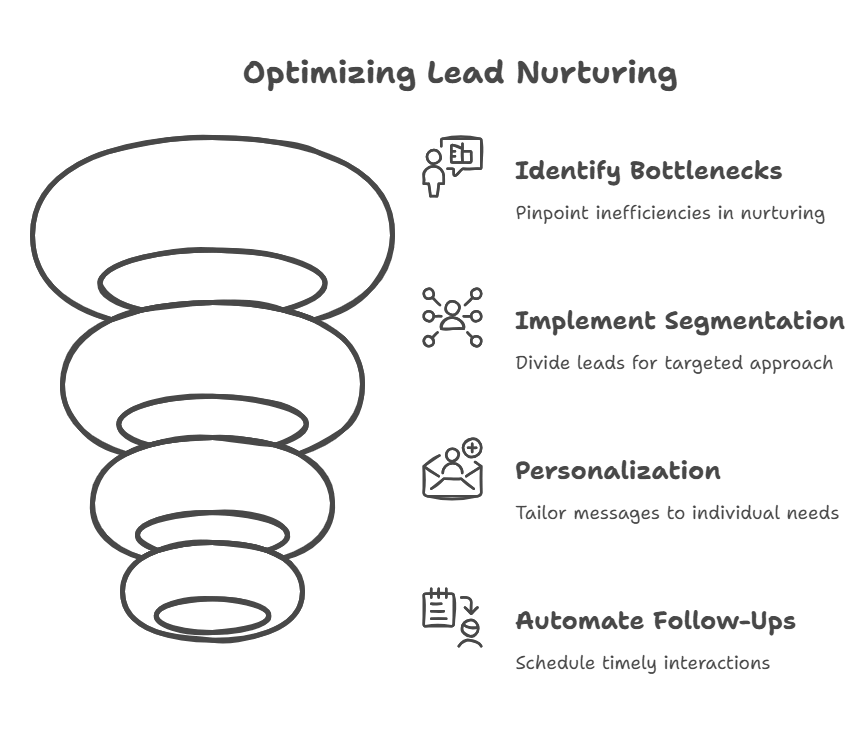
Identify Bottlenecks in Your Lead Nurturing Process
Streamlining lead-nurturing workflows ensures continuous engagement and efficient progression through the marketing funnel. Utilize analytics tools to locate stages where leads drop off or disengage and review conversion rates at each stage to assess the effectiveness of current lead-nurturing workflows. Common issues like delayed responses, irrelevant content, or overly complex workflows should be flagged and resolved.
For instance, if a significant number of leads fail to respond to initial emails, this may indicate an issue with the messaging. Tools like Google Analytics and CRM analytics features are ideal for detecting such bottlenecks.
Implement Segmentation and Personalization
Personalization in marketing automation and segmentation are powerful tools for tailoring content to specific audience subsets. By segmenting leads based on behavior, demographics, and engagement levels, more targeted content can be delivered. Incorporate personalization by including the recipient’s name or past interactions, and utilize dynamic content that adapts based on lead profiles or actions.
Automate Timely and Relevant Follow-Ups
Automating follow-ups ensures timely engagement with leads after key actions such as downloading a resource or attending a webinar. Use triggers like email opens, link clicks, or form submissions to initiate follow-up actions, creating effective follow-up email sequences that encourage further engagement. An example of this would be sending an automated email after a lead downloads an eBook, providing additional resources, or scheduling a product demo.
2. Improve Email Marketing Automation

Email remains a critical component of marketing automation, and improving it can lead to significantly better conversion rates.
Optimize Email Content and Design
Conduct A/B testing on elements like subject lines, email templates, and calls-to-action to find what best resonates with your audience. Ensuring mobile-friendly designs is essential, as a considerable portion of emails are opened on mobile devices. Additionally, storytelling and compelling visuals can significantly boost reader engagement.
Leverage Behavioral Triggers and Timing
Emails should be sent based on user interactions, such as visiting certain pages or clicking specific links. Utilize analytics to pinpoint the optimal times for sending emails, thereby increasing open rates. Additionally, drip campaigns can nurture leads over time with programmed email schedules. For instance, sending a reminder email if a lead abandons a shopping cart can rekindle interest.
Enhance Personalization Efforts
Using merge tags to insert personal details like a recipient’s name or company creates a personalized touch, while recommending products or content based on past behavior elevates personalization efforts. Maintaining a clean email list by regularly eliminating inactive subscribers enhances email deliverability.
3. Fix Broken Automation Workflows
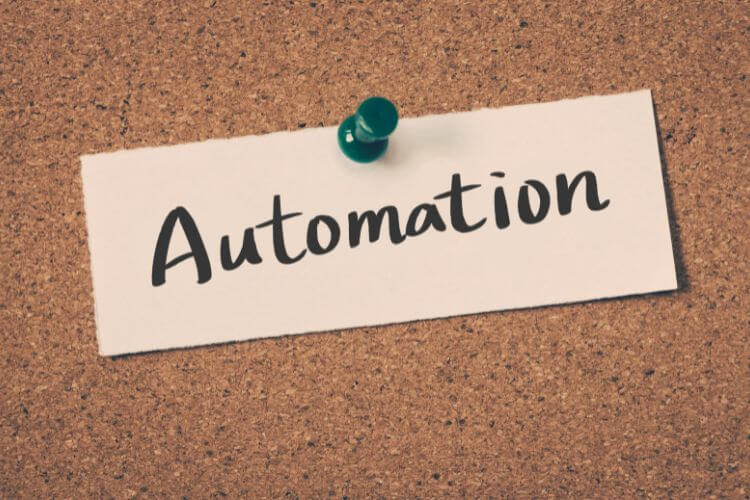
Fixing broken automation workflows is vital to prevent lead loss and maintain operational efficiency.
Conduct Regular Workflow Audits
Scheduling periodic reviews of all marketing automation workflows can help identify and remedy any errors or outdated processes. Utilize checklists to systematically analyze each workflow component, ensuring all steps are functioning as intended. For example, ensuring that all email links lead to the correct landing pages minimizes potential errors.
Align Marketing and Sales Teams
Facilitating collaboration between marketing and sales ensures a seamless transition for leads. Sharing insights and feedback can significantly improve workflow effectiveness. Implementing a unified CRM system allows both teams to access the same data, further streamlining efforts. Regular meetings and shared CRM notes help in maintaining a consistent lead quality.
Utilize Workflow Automation Tools
Introducing advanced workflow automation tools like n8n provides flexibility in creating complex, tailored workflows. Automating repetitive tasks simplifies processes, while a list of recommended tools with features and benefits can guide decision-making for optimal tool selection.
4. Optimize Your Marketing Automation Funnel
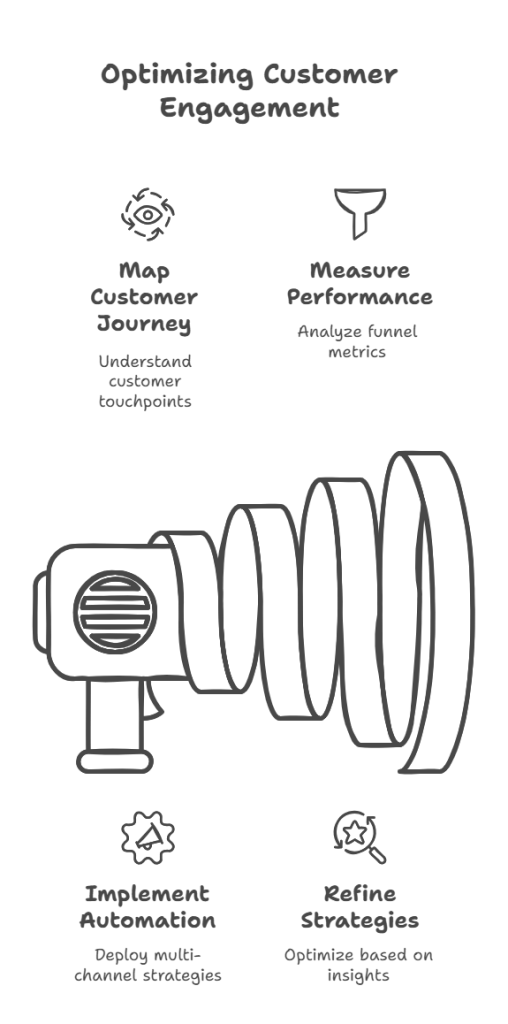
Marketing automation funnel optimization is crucial for guiding leads efficiently through the customer journey.
Map Out the Customer Journey
Visualizing each touchpoint from initial awareness to final conversion helps identify points for automation to boost efficiency. Consistent messaging aligned with customer needs and expectations ensures a seamless journey. Creating a journey map that highlights areas where automation enhances engagement is instrumental.
Implement Multi-Channel Automation Strategies
Integrating channels such as email, SMS, social media, and push notifications in automation workflows ensures cross-channel marketing efficiency. This allows engagement with leads on their preferred platforms, providing a cohesive marketing experience. For instance, following up an email with a social media retargeting ad can continue the engagement.
Measure and Refine Funnel Performance
Setting key performance indicators (KPIs) such as conversion rates, time duration in each funnel stage, and engagement metrics enables monitoring and refinement. Data-driven insights should be used to adjust strategies to optimize the funnel continually. For instance, high lead drop-off rates at the consideration stage may necessitate a review of content relevance.
5. Adopt Best Practices for Marketing Automation Workflow Optimization
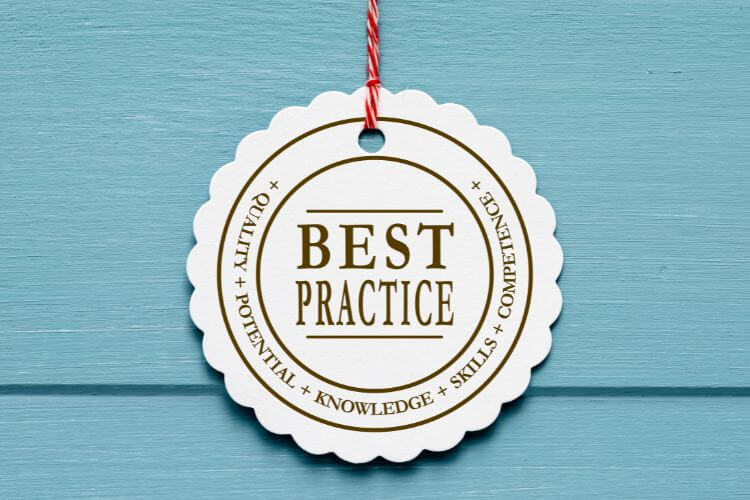
Adapting to best practices ensures efficient and effective workflow optimization.
Embrace Continuous Testing and Improvement
Regular A/B testing on workflows and content provides insights into optimal strategies. Staying updated with industry trends and creating a culture of experimentation helps marketers grossly fine-tune their approaches. This culture allows trying new tools or techniques to find better marketing strategies.
Focus on Data-Driven Decision Making
Leveraging customer data enables informed decisions about workflow enhancements. By employing predictive analytics, marketers can anticipate customer behavior and tailor campaigns accordingly. For example, using machine-learning models to predict churn and implement retention strategies aids in effective decision-making.
Invest in Advanced Marketing Automation Workflows
Exploring advanced workflows that employ AI and machine learning facilitates smarter automation solutions for complex needs. Studying examples of companies that reap benefits from advanced workflows can offer valuable insights.
Recommended Marketing Workflow Automation Tools
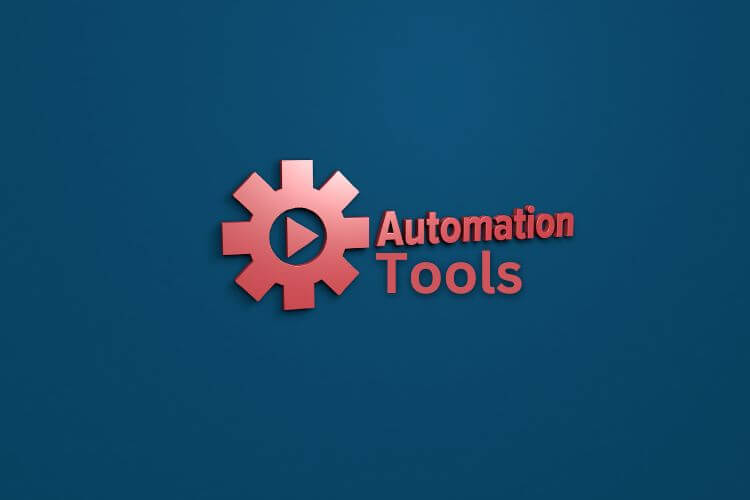
Several tools stand out in facilitating marketing automation workflow optimization:
n8n
Features:
- An open-source workflow automation tool offering extensive customization.
- Integrates multiple platforms seamlessly.
Benefits:
- Flexible creation of complex, tailored workflows.
- Cost-effective solution for various business sizes.
Tool A
Features:
- Specializes in email marketing automation with advanced segmentation.
- Offers a user-friendly interface with drag-and-drop workflow builders.
Benefits:
- Quick setup with pre-built templates.
- In-depth analytics for monitoring campaign performance.
Tool B
Features:
- Focuses on lead nurturing workflows with personalized content delivery.
- Provides AI-driven insights for optimization.
Benefits:
- Enhanced personalization capabilities.
- Predictive lead scoring for prioritized efforts.
Tool C
Features:
- Robust analytics and reporting for data-driven decision making.
- Integration with CRM systems for unified data management.
Benefits:
- Improves alignment between marketing and sales.
- Comprehensive dashboards for performance tracking.
Factors to Consider When Choosing Tools
When selecting tools, evaluating scalability and integration capabilities with existing systems is crucial. Assessing user-friendliness alongside support and resources availability ensures smoother adoption. Finally, analyzing cost-effectiveness and ROI justifies the investment in these tools.
Conclusion
In summary, here are the five proven ways to optimize marketing automation workflows:
- Streamline lead nurturing workflows.
- Improve email marketing automation.
- Fix broken automation workflows.
- Optimize your marketing automation funnel.
- Adopt best practices for workflow optimization.
Continuous optimization and a data-driven mindset are necessary in achieving effective marketing automation, ultimately leading to better conversions, enhanced customer journeys, and overall business growth.
